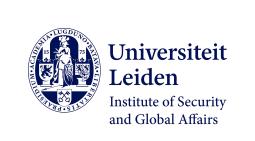As noted in the Report Reflection on Surveillance and Protection. Experiences From Denmark, United Kindom, Italy and Germany, by Bakker and Vos (2023):
"threats against politicians, civil servants, public figures and threats in interpersonal relationships are not unique to the Netherlands […] Other European countries are also struggling with these phenomena,” especially in light of the growing threats from anti-government extremists and “confused and/or radicalized loners.”
The authors of the aforementioned report stated that studies related to experiences elsewhere allows for the development of “a mirror to reflect on the threat” and observance, and perhaps implementation of the best practices from abroad in the Dutch context.
This project aims to take off where Reflection on Surveillance and Protection left off and continue the authors’ inquiry into three new country case studies, i.e. the Czech Republic, Poland and Slovakia. The project focuses on three “new” Member States with a rather insignificant history of political violence, including attacks on VIPs or other locally well-known and significant individuals after 1989 and joining the EU in 2004. However, the situation has undergone a marked change in the 2010s and the 2020s with a string of cases testing the endurance, preparedness and professionalism of their surveillance and protection systems, previously largely untested or under less pressure from threats and direct action.
The change in that perception of the threat and the reality on the ground has been marked by the murder of Marek Rosiak, an aide to a Euro MP in Lodz, Poland, in 2010. By no means a national figure, the murder marked “the first” act of severe political violence to have been conducted in Poland after the downfall of communism. Throughout the 2010s, Poland and Slovakia, but especially the Czech Republic, saw a string of cases in which lone actors attacked local politicians, their means of transport or their places of work using a variety of means – from knives and petrol bombs to homemade explosives. These often hardly featured in the national media, and were not covered by the international media, but contributed to the development of a realisation that the posture of “it could not happen here” no longer applied. The decade’s end finally shattered any illusion that such political violence was non-applicable to the region as journalist Jan Kuciak was murdered in 2018 in Slovakia, and the mayor of Gdansk, Poland, Pawel Adamowicz, was assassinated live on TV in 2019. These events were followed by a seemingly bizarre case of local politics going international as the Russian authorities stood accused of hatching assassination plots against local politicians in Prague, Czech Republic in 2022, who have been responsible for the removal of a Soviet-era monument (commemorating Red Army commander, Marshall Konev) from that city. 2022 also brought the news that a serious and viable plot against the life of the Slovak PM, Edward Heger, was in the stages of advanced preparation in Bratislava. Tragically, the plotter later turned his attention towards striking other targets and, in October of that year, staged a shooting outside an LGBT bar in downtown Bratislava.
About the project
The project will reflect on this change of posture and the aforementioned cases, and consequently, its focus will be threefold:
a) descriptive – describe the existing surveillance and protection models (systems) of the three cases covered; this entails asking the following questions while conducting the research: who has what role and task in the field of surveillance and protection, and how is the implementation organized? What laws and regulations underlie the system? What is the methodology used while implementing the system’s measures? To what extent is the system centralised/decentralized (localized), and to what extent does it rely on packages and/or customization? Does it feature elements of public-private cooperation?
b) comparative – situate these in the context of the Dutch cases while providing a comparison of how similar/different these models are; this entails covering the issue of good practices which are potentially adaptable to the Netherlands and assessment of how the systems are financed and tested in the three cases studied vis-à-vis the Netherlands,
and most importantly, c) impact related – demonstrate how these models have or have not been changing under the impact of or fall out from the attacks and plots discussed above. This is especially relevant in light of findings by Bakker and Vos (2023, p. 5), who have established that the models in surveyed countries are “ partly formed by certain attacks and incidents. These often led to necessary, new and additional investments in people and resources or new legislation. But it can also lead to a too narrow focus on certain threats or modus operandi.” This effectively means that threats which are deemed urgent at a given moment shape the totality of a given model or surveillance and protection system. Bakker and Vos underscore that in the Dutch context, this role is being played by the threat from organised crime (Ibid., p. 5), but it differs from country to country as these have been impacted by other more or less successful attacks. This project will add to their findings by studying this aspect of surveillance and protection systems in three new countries.
When discussing impact, the research will focus on the effects on the authorities, local or national politics (depending on the severity of the case) and the population of a given country. Have new countermeasures been implemented? If yes, then has their introduction been problematic in any way – from a practical, financial, or democratic perspective (curtailment of individual rights)? What were the arguments for and against the introduction of these countermeasures? Has there been any resistance from the people these countermeasures were to affect? Have these countermeasures been introduced in relation to local government officials as well? What was the response of these officials?



